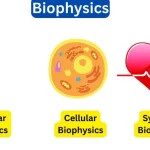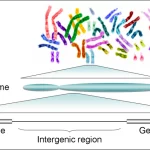
Bioinformatics: Charting the Future Through Quantum Tech and Specialized Subfields
August 24, 2023Part 1: Introduction
Bioinformatics stands at a fascinating juncture. With an unprecedented influx of biological data, the challenge isn’t just its analysis but also the innovation in how we do it. The discipline is already branching into various subfields, and there’s growing excitement around the possible integration of quantum computing.
Part 2: The Present Scenario
At this moment, bioinformatics covers a broad spectrum of tasks, from decoding genes and identifying new drugs to studying evolutionary patterns and systems biology. This diversity underscores the field’s ongoing specialization, meeting the varied demands of both biology and healthcare.
Part 3: The Rise of Specialized Areas
Bioinformatics is further fragmenting into highly specialized sectors like metagenomics, which explores the genetic makeup of entire microbial communities, and pharmacogenomics, which examines how genetics influence drug responses. Another burgeoning field is neuroinformatics, which merges neuroscience with data science.
Part 4: The Quantum Computing Promise
Quantum computing is frequently touted as a transformative technology for multiple disciplines, and bioinformatics could be one of them. Traditional computers often struggle with the immense complexity of biological data. Quantum machines, capable of parallel computations, could significantly speed up these tasks, potentially revolutionizing the way we interpret biological data.
Part 5: Accelerating Drug Development
One of the most intriguing prospects of quantum computing in bioinformatics lies in expediting drug discovery. Sifting through a vast array of compounds to find potential drug candidates can be a lengthy process. Quantum computing could dramatically reduce this timeline, making new treatments accessible sooner.
Part 6: Hurdles and Ethical Dilemmas
However, quantum computing comes with its own set of challenges, such as stability issues, high error rates, and the intricate task of creating quantum algorithms. Moreover, as bioinformatics continues to expand and diversify, ethical questions around data security and fair access to technology will gain prominence.
Part 7: Interdisciplinary Collaboration
As the field matures, teamwork across various disciplines will become increasingly vital. Experts in biology, computer science, statistics, and even ethics will need to join forces to address the multifaceted challenges that bioinformatics presents.
Part 8: Final Thoughts
The road ahead for bioinformatics is both promising and intricate, characterized by the sprouting of new specialized areas and the potential adoption of game-changing technologies like quantum computing. While obstacles are plenty, the prospects for revolutionary discoveries and applications are genuinely thrilling.

















